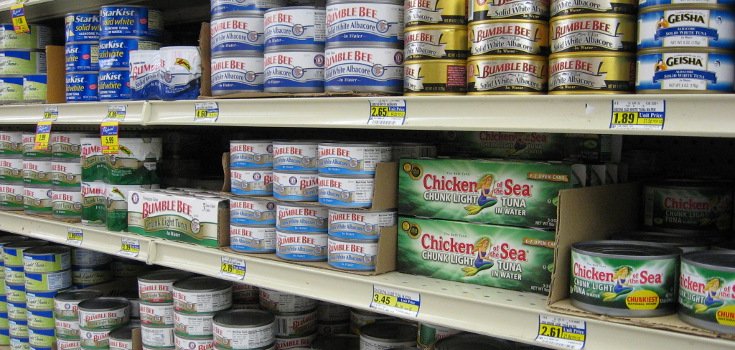Tuna Ranked: How to Really Avoid BPA and Mercury in Your Fish

Why have tuna sales in America dropped significantly? Tuna still is the most popular canned fish of all time, but health concerns involving the packaging is playing a part in the diminishing popularity of the food. This, as well as the poor quality and safety of the food itself, environmental concerns regarding overfishing, and unintentionally harming other aquatic life. Does your tuna measure up? Read on to find out.
Canned tuna seems like an inexpensive and practical food choice, having been considered a staple of the average American consumer for years. However ,when concerns about mercury contaminating tuna and other seafood sources were raised, it created a stigma about seafood, bringing into question how safe it really is for consumers.
Methylmercury is the type that slowly bio accumulates over time in fish and shellfish that end up on our dinner tables, and soon, our bodies. This mercury exposure is known to cause a number of health problems, including neurological damage and organ damage.
Along with health concerns, questions about whether fishing methods are sustainable and how they affect the surrounding ecology have caused many to raise awareness about how companies produce their product, and whether or not it is safe and humane. Unintentionally catching marine life like dolphins, turtles, sharks and other species could potentially put them in endangerment status, while overfishing could destroy the natural balance of marine life in some areas.
“Unfortunately, dolphin safe does not mean ocean safe,” said Greenpeace seafood markets lead Graham Forbes. “Turtles, sharks and other vulnerable ocean life are collateral damage in tuna fisheries that supply the U.S market. The big players have a responsibility to join forward-thinking brands in building a more responsible tuna industry. As the market continues to shift, selling products that are bad for our oceans will be bad for business.”
These are just a few of the reasons that more people are turning away from tuna. If you want to see other issues regarding tuna consumption, check out one of our earlier posts.

Greenpeace has created a comprehensive guide showing which major brands of canned tuna were able to follow sustainability guidelines, like not overfishing, eliminating bycatch, treating their workers humanely, and properly labeling their products. Many of the largest named brands in their investigation were found to have the worst ratings for sources, sustainability, and overall quality of product. The environmental concerns along with the potential health risks of these products have given consumers key points to consider when they are buying their canned tuna (if they still do).
“Consumers should know that popular and trusted canned tuna brands are contributing to ocean destruction at an alarming rate,” said Forbes. “While the biggest brands have thus far refused to offer sustainable tuna, the silver lining here is that other companies are stepping up to provide ocean safe options for their customers.”
Additional Sources:
Image from: LuLegacy

I was thinking the same thing about radiation contamination from Fukushima disaster that occur about four years ago and it’s got a lot worse than ever before.
It seems we are more concerned about the safety of the oceans than we are about the health of human beings, namely our children. We should be fishing responsibly, but what about the consumption of mercury?
This list looks dubious when you’re talking about mercury because the first three or four on the list are albacore tuna which is the white tuna that is three times higher in Mercury than skipjack. So how can you say that these albacore brands have less mercury then the Trader Joe’s skipjack?
Thay catch smaller fish. The bigger the fish the more mercury